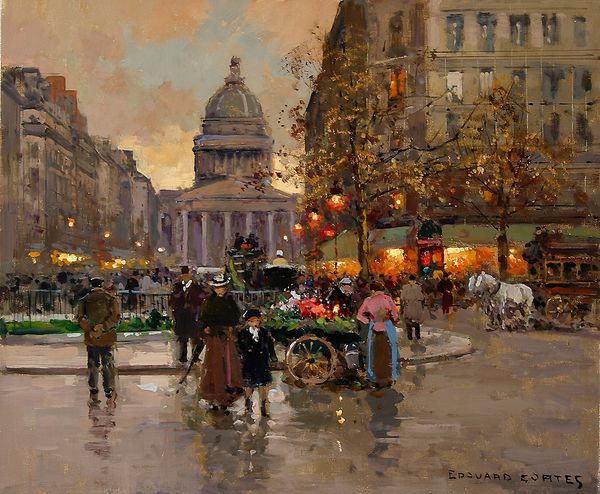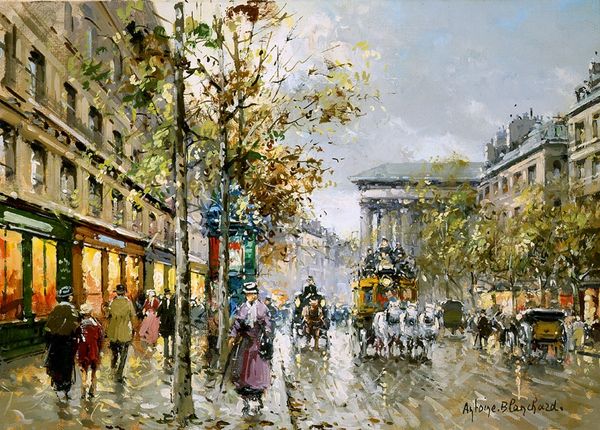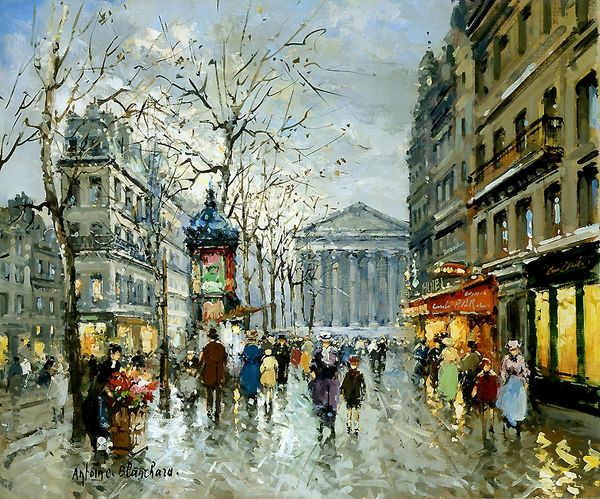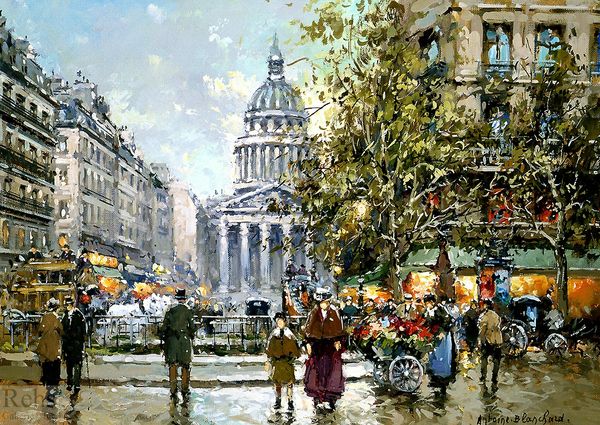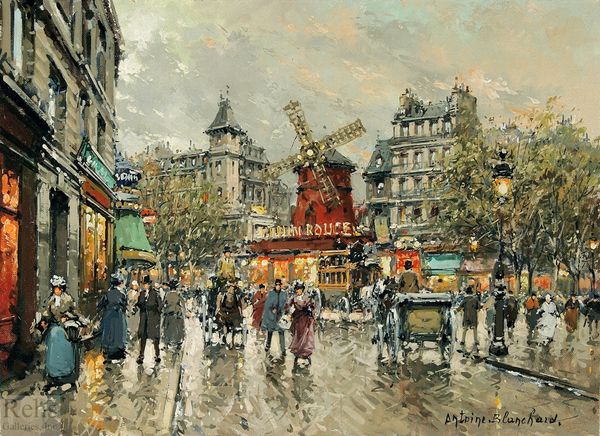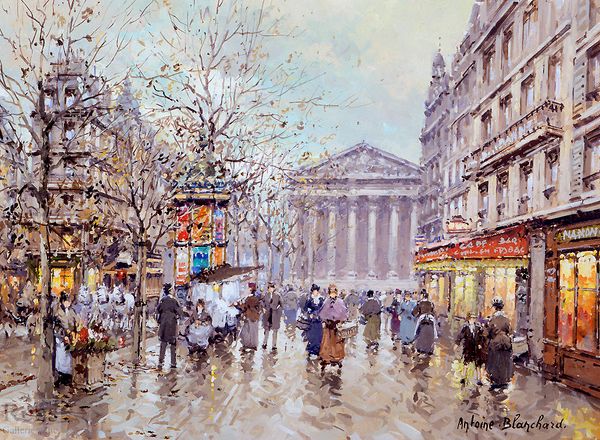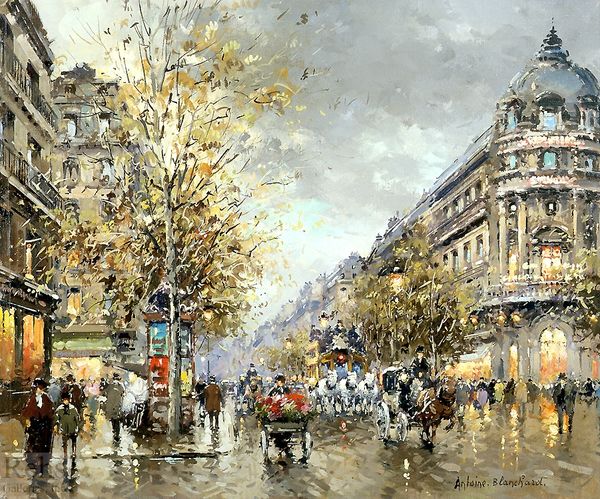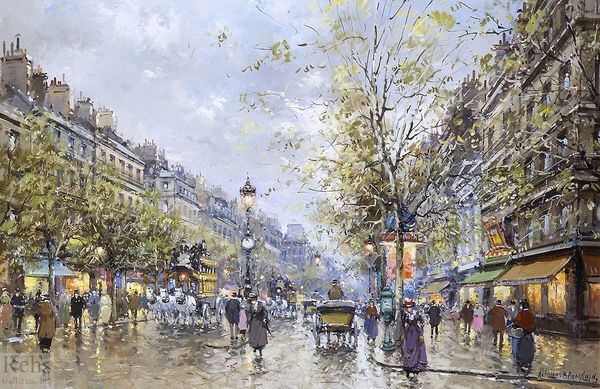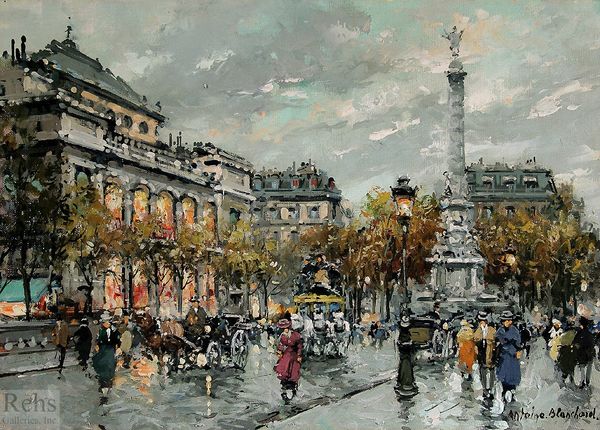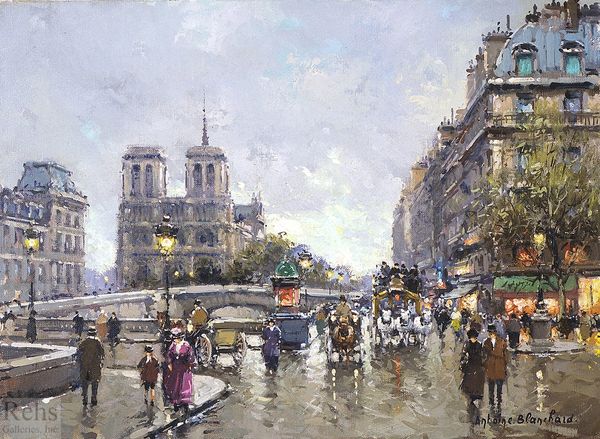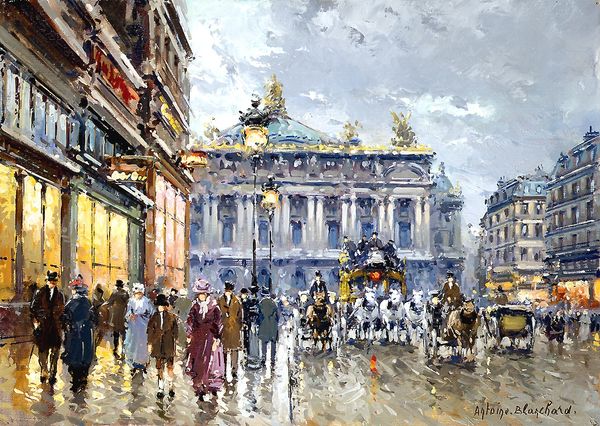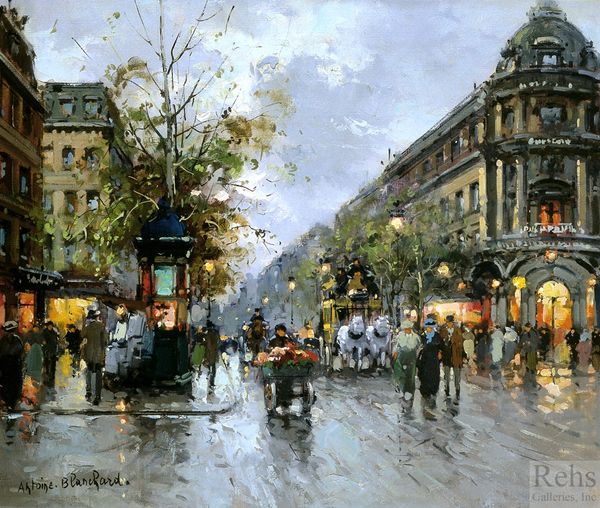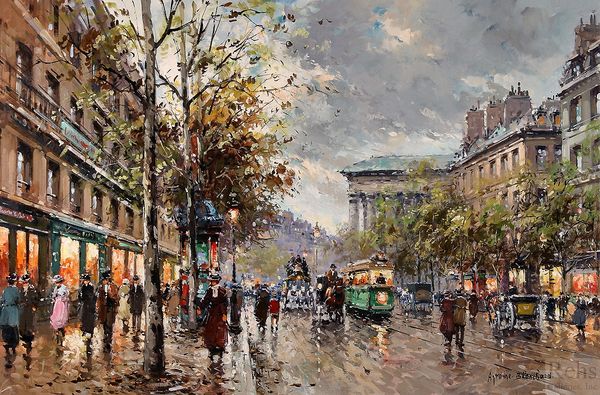
painting, plein-air, oil-paint, impasto
#
cityscape
#
painting
#
plein-air
#
oil-paint
#
landscape
#
figuration
#
impasto
#
square
#
cityscape
Copyright: Antoine Blanchard,Fair Use
Editor: So this painting, titled "The Pantheon," is by Antoine Blanchard. Looking at the texture of the paint, you can really see the impasto technique, especially capturing the wetness of the street. It feels kind of nostalgic. What’s your take on this? Curator: Well, given my materialist approach, I see a window into the production of Parisian cityscapes as commodities. Look at the repetitive application of paint; it hints at an assembly line of art, destined for the tourist trade, replicating similar scenes again and again. The brushstrokes become a record of labor. Editor: That's interesting! I hadn't considered the repetitive aspect. But does that diminish its artistic value, knowing it was made perhaps for commercial reasons? Curator: Not necessarily diminished, but reframed. Consider the context: Blanchard wasn’t simply capturing beauty. He was responding to a market, a demand for a particular image of Paris. How does that inform your understanding of the “nostalgia” you mentioned? Editor: I see... It makes me wonder about the people buying these paintings, and the image of Paris they wanted to take home with them. Like, it becomes a piece of consumer culture, not just fine art. Curator: Exactly! The oil paint itself, sourced and manufactured, speaks to global trade networks and the accessibility of art supplies in the mid-20th century. Every layer tells a story of materials and markets. Editor: So by examining the materials and production process, we understand so much more about its role as a commodity and a piece of history? Curator: Precisely! And it makes us think critically about the labour involved in creating these “nostalgic” images and how that intersects with commerce. Editor: This really has broadened my understanding beyond just the aesthetic appeal of the piece. Thanks! Curator: Indeed! It encourages us to look at all artworks, not as isolated masterpieces, but as products of complex socio-economic conditions.
Comments
No comments
Be the first to comment and join the conversation on the ultimate creative platform.
